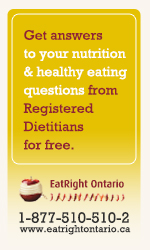
Safe Food Handling begins even before you bring your purchase home. As foodies, grocery stores are a haven of delicious ingredients that will become masterpieces, but can they actually be the starting point for potential food safety concerns?
Have you ever given much thought to the order in which you shop? The majority of grocery stores are generally designed in the same format. You enter into produce which then leads to meats then dairy, followed by aisles of dry and canned goods. The most efficient system is to start with one end and work to the other as you check off your listed items and fill your cart.
Would you be surprised to learn that this in fact is shopping in reverse?! Refrigerated and frozen items should actually be purchased at the end of the grocery trip not the beginning. Bacteria develops rapidly as the temperature of poultry begins to rise into the danger zone with temperatures in the range of 40°C – 60°C. As you place your poultry into the cart and continue the rest of your 45 minute trip through the store for your remaining items, you could potentially be creating an opportunity for bacterial growth.
Other tips to consider while still at the grocery store:
- Always verify product best before dates
- Examine your packing for tears or leaks which can spread juices which can cause cross contamination
- Place your poultry products in a separate bag (clear produce bags) before placing them into your cart
Safety continues into the transportation of your product to your home. What is the distance you are traveling to get home? what is the temperature outside?. If it is a warm day and you have a drive which may be more than 10-20 minutes, you may want to keep a pop up cooler in your trunk to ensure your poultry stays cool.
If you will be consuming your poultry immediately ensure to have it cooked to the desired temperature within 2 hours of it being left out at room temperature.
Other tips to consider while preparing your chicken for cooking:
- Wash your hands thoroughly before and after handling raw poultry
- Do not wash your chicken with water, potential splashing onto other surfaces can spread harmful bacteria, take care if you choose to wash raw chicken.
- Wash any items that may have come in contact with raw poultry thoroughly before using again, example: plates, cutlery, cutting boards… with soap and hot water
- Keep a separate cutting board for your meat and vegetable items to avoid potential cross contamination
- Sanitize food contact surfaces regularly following directions outlined on your cleaning product or using household bleach solution (5ml bleach to 750ml water) rinse with water
If you will not be consuming your raw poultry immediately prepare it for storage. If you expect to use it within 1-2 days after purchase, place your poultry in the fridge which should be set at 40°C, otherwise prepare it by ensuring it is properly wrapped and place it into a freezer which should be set at -18°C for up to 1 year.
When you are ready to cook your frozen raw poultry, the best methods of defrosting are:
- Raise product temperature to 40°C by defrosting your chicken in the fridge
- Bring the temperature up by defrosting your meat in cool running water or soak (still wrapped) in a bowl full of cool water
- Defrost in the microwave (if using this method ensure to cook immediately)
Salmonella which is a bacteria most commonly associated with raw poultry and eggs, can cause serious illness, especially to young children under 5 and young adults. Camplyobacter, which is also a bacteria associated with raw poultry is a concern for children under 5 and young adults between 15-29.
There is a lot to consider in how we handle and prepare raw poultry, always ensure to wash hands thoroughly before and after handling, and keep young children away from raw products.
Chicken, although delicious can cause harm when it isn’t handled properly. Following these guidelines and our How to safely cook chicken; temperature cooking guidelines can ensure your meal is always safe to eat and cooked to perfection.

